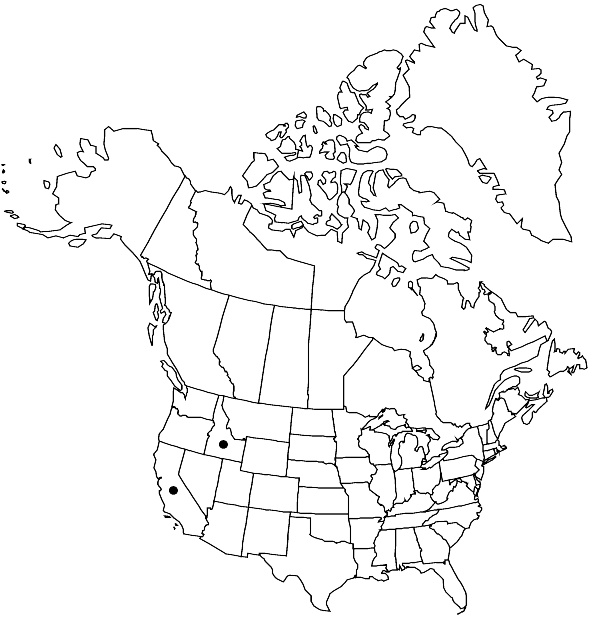Codriophorus norrisii
in R. Ochyra et al., Cens. Cat. Polish Mosses, 141. 2003,.
Plants mostly small to moderately sized, stiff, loosely tufted, olivaceous distally, blackish brown proximally. Stems (1.5–)2–3(–3.5) cm long. Leaves appressed, closely imbricate, erect, lingulate to oblong-lanceolate, (1.7–)2.0–2.5(–3.0) × 0.7–0.8(–0.9) mm; margins 2(–4)-stratose throughout, variously recurved on both sides in the proximal 1/2, plane distally, entire basally, bluntly erose-dentate at the extreme apex or sometimes down the margin in the upper one fourth, occasionally subentire, bordered from nearly the base by (1–)2–10(–13) rows of cells in 2(–4) layers; apices acute to long-acuminate, less often rounded-obtuse and subacute; costa subpercurrent, entire and only shortly forked at the tip, 70–90(–120) µm wide; laminal cells 1-stratose throughout (except for the margins) to variously 2-stratose near the apex and with 2-stratose streaks in the proximal part, without or with inconspicuous papillae over the cell walls. Inner perichaetial leaves sheathing, yellowish brown to hyaline proximally, chlorophyllose in the upper one third and, with areolation similar to that of the vegetative leaves and with frequent 2-stratose patches at the margin. Seta brown, 4–4.2 mm. Capsule obloid to shortly cylindric, 1.5–2 mm; peristome teeth 340–420 µm, orange-brown, irregularly split to the middle or slightly below into 2–3 filiform prongs, densely papillose. Spores 15–20 µm.
Habitat: Wet granite stones, boulders, and rockslabs in and at banks of streams and rivers, usually subject to temporary inundation or submerged
Elevation: moderate elevations (500-1600 m)
Discussion
Of conservation concern.
Codriophorus norrisii is a relatively rare montane species. It is closely related to the widespread and common C. acicularis, with which it shares the lingulate leaves with erose-dentate margins at the apex and similar affiliation to aquatic habitats. It is generally a smaller and fairly slender plant, with most leaves long-acuminate to acute. The leaves have distinct marginal thickenings that extend from the base to the apex and are separated from the costa by 1-stratose laminae, even at the extreme apex; rarely do they merge imperceptibly with 2-stratose laminae. Moreover, papillae are absent on older leaves or are narrow and situated strictly over the cell walls. The innermost perichaetial bracts are strongly concave, yellowish brown to hyaline in the basal two thirds, with a lax areolation of thin-walled cells, whereas in the distal one third the cells are chlorophyllose and similar to those in the vegetative leaves, usually with 2-stratose patches in 1–3 rows at the margins. In contrast, the plants of C. acicularis are larger and coarse, the leaves are usually rounded-obtuse at the apex, and the leaf laminae are 1-stratose in North American specimens, except for a few collections from California (e.g., Shevock & York 18322, CAS, KRAM). However, the latter are at once distinct by having very large, flat papillae that cover almost the entire lumina of the cells, leaving only a narrow groove over the cell center. Additionally, the innermost perichaetial leaves in C. acicularis are hyaline throughout, occasionally with some chlorophyllose cells at the extreme apex. The 2-stratose distal laminal cells of C. norrisii may resemble those of C. depressus, which, however, has broadly ovate-lanceolate to broadly ovate and deeply concave leaves, mostly smooth or indistinctly papillose laminal cells, and a very broad costa that is strongly flattened abaxially and has 9–15 enlarged adaxial epidermal cells in the basal part.
Selected References
None.
